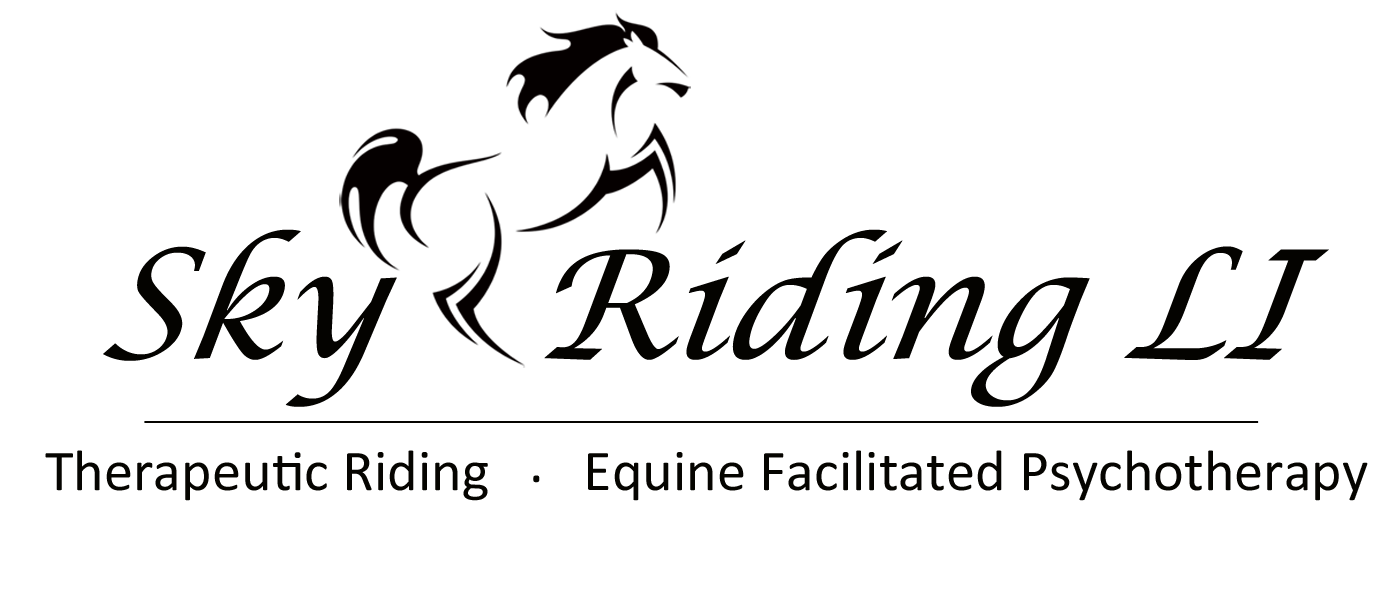By Arianna Velcich, Mental Health Occupational Therapy, University of Scranton
Occupational therapists work with their clients to help them achieve a fulfilled state in the person’s life through the use of activities that are found to be meaningful to the client. The goal is to achieve the highest level of independence that is realistic for the client. The believed role of equine-facilitated therapy is that horses may be highly beneficial in aiding in the healing process of a person struggling with a mental illness. As an occupational therapy student observing at SkyRiding L.I., I quickly learned the link between occupational therapy and equine-facilitated therapy.
Using horses to treat a person with mental illness can assist in improving their cognitive, physical, emotional, and social skills. Due to the fact that horses are prey animals, they are sensitive to changes in human behavior. A horse may react differently depending on the emotional state of the person. A large part of communication is depicted through unspoken language and gestures, which certain people find difficult to read. Learning to read a horses behavior can then be generalized into reading another humans behavior. Throughout my experience at SkyRiding L.I., I have seen that the child’s level of comfort when interacting with the horse is often higher than when they interact with another human. Working with the horses serves as a third party in the therapy session and eliminates certain hesitancy that may be present in just a client/patient relationship.
There are not only emotional benefits but physical ones as well. Riding a horse improves core strength, balance and stability, coordination and flexibility. This activity also provides a positive impact by training the lower limbs as well as the intrinsic hand muscles. Finding ways to practice certain skills without performing the actual activity is called generalization and is a skill occupational therapists often use. One way this skill can be used is through observation. During my experience, I noticed that motor coordination, eye movements, body functions, and the ability to follow directions that go into riding a horse are similar to those needed for driving a car. Along with all the other muscles horseback riding strengthens, the intrinsic hand muscles are substantially developed due to griping the reigns. This, in turn, can improve a child’s ability to hold a pencil and write. Overall, equine-facilitated therapy can help a person achieve many occupational therapy goals. Two of the most prevalent and equally important goals to the rest are play and leisure.





